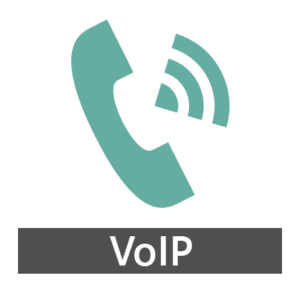Structured Cabling. When its time to call in the experts
It’s not the first thing that comes to mind when you think of a business telephone system, but the network of cables connecting your internal hardware – and your business, to the wider telecommunications infrastructure outside is crucial – which is why structured cabling is such a popular choice.
The Importance of Cabling on Network Performance
In addition to making up a large proportion of your budget for IT, cabling is also one of the most important elements of your IT infrastructure – whether that’s for your business telephone system, or your wider corporate network and data connections. Yet cabling is often overlooked.
Your choice of cabling system and materials has a direct influence on the ergonomic efficiency of your IT set-up, the speed and smoothness with which data travels through your network, the amount of power you consume, and your overall impact on the environment. So it’s vital to make the right decisions relating to which cabling material and installation system is right for you.
 Copper or Fibre?
Copper or Fibre?
Traditionally, enterprise IT networks have relied on copper cable, typically in the Category 5e and Category 6 specifications. More recent developments in copper wiring technology have led to the growth of the 10G BASE-T standard – a specification that’s capable of supporting data transfer speeds of up to 10 GB/s on Ethernet networks.
For shorter range cable runs supporting mainstream desktop applications, copper cable is fine. But the high data throughput, transfer speeds and bandwidth demands of today’s intensive commercial applications and telecommunications (which often require integrating a business telephone system with a fully-fledged data network, using Internet Protocol or IP) set the limit on copper wiring to around 10 GB/s.
Furthermore, the cable lengths and high data transfer rates required for most contemporary business systems tend to introduce Electro-Magnetic Interference (EMI), even in 10G BASE-T cabling. Installations also tend to be quite complex and require highly skilled and specialist contractors.
Fibre optic cabling is composed of extremely thin strands of glass or plastic, known as optical fibres. Each strand can carry somewhere in the region of 25,000 calls – so a business telephone system based on fibre optics has the potential to field up to several million calls. Data transfer speeds and network bandwidth through fibre optic cable are also significantly higher than those of copper wiring, with fibre-based broadband typically running five to ten times faster than the conventional DSL variety.
Power consumption is also significantly less, with fibre optic cabling typically requiring 1-5 watts per fibre port, as compared to the 10-15 watts needed for each port, with copper. Optical fibre also takes up less space, weighs less, has a higher density, and is capable of being laid in much longer runs than copper cable. Taken with the fact that fibre optic cabling isn’t nearly as prone to Electro-Magnetic Interference, it’s little wonder that this is the technology gaining favour with today’s digital enterprises.
And specialist organisations like LG Networks are installing them for increasing numbers of process and data-intensive applications. These range from simple office networks to more complex environments combining a business telephone system with data, Unified Communications (UC), and access to cloud-based and cloud-hosted resources and services.
What Is Structured Cabling?
A structured cabling system consists of a logically configured framework for distributing cables. This could be for a single building, or an entire corporate networking “campus”. Structured cabling is device-independent and is built up from standardised, sub-systems which are designed to industry standards.
Structured cabling provides a complete system of cables, connectors, and associated hardware for telecommunications and network infrastructure. This applies to both your business telephone system and your enterprise data network.
In contrast to traditional point-to-point wiring (which is often ad hoc, and can lead to a jumbled mess), structured cabling is laid in a designed and logical manner, in a configuration that’s easy to understand, label, and manage. This also makes it easier for a structured cabling system to be modified – if for example, you wish to expand or alter your business telephone system and data connections.
Structured cabling also unites all of your wiring into a single infrastructure that’s capable of transferring data in multiple formats. The logical configuration, combined with the latest in cable and transfer technologies, leads to greater speed, data capacity, and efficiency – and gives businesses a greater return on their investment.
What You Can Take Care Of, Yourself
The beauty of a structured cabling system lies in its logical design and user-friendly deployment. With connectors and other components clearly labelled, workers without huge amounts of IT experience can easily identify and hook up the hardware they need.
If trouble does strike, structured cabling makes it easier for your in-house IT team to trace the source of the problem and to address an issue in isolation – typically causing no disturbance to other parts of the system.
When It’s Time To Call In The Experts
It’s tempting to think of “calling in the experts” in this sense as equivalent to calling an Emergency Services unit. But the truth of the matter is that setting up an enterprise data network and business telephone system isn’t an easy endeavour – and the experts that you select need to be with you from the initial stages, as a partner in the exercise, rather than a fire-fighting crew.
The organisation you choose should have experience and a proven track record in the technology you’re using, coupled with an understanding of the relevant industry standards for installation, deployment, and testing. They should also have access to the latest and most appropriate tools and technology.
They should be there from the installation and testing of your structured cabling through its service life and be available to advise and assist in the event of any major problems you may have, or if you’ve decided that it’s time to upgrade or alter your network.
Who Are You Going To Call?
With a loyal customer base and industry experience stretching back over decades, (as well as having a skilled team versed in the installation of structured cabling, IT networks, telecommunications, Wi-Fi, and CCTV), LG Networks readily fits this description.
And as specialists in VoIP (Voice over Internet Protocol) and SIP (Session Initiation Protocol) based telecommunications, they’ll be able to advise and assist in setting up your business telephone system, as well.
If you’d like to know more about how structured cabling can provide a solid foundation for your business telephone system, contact the experts at LG Networks, today.


 Copper or Fibre?
Copper or Fibre?


